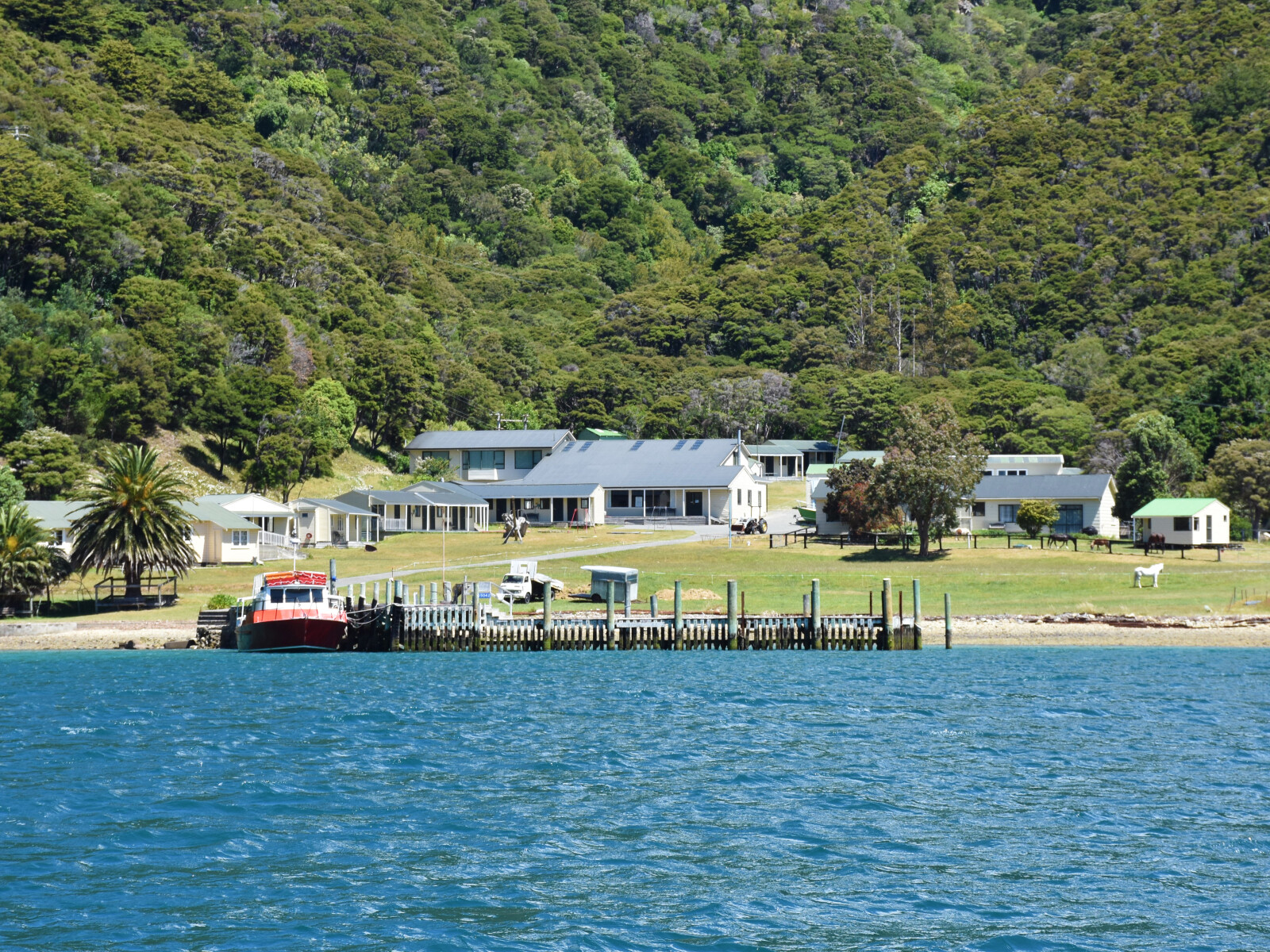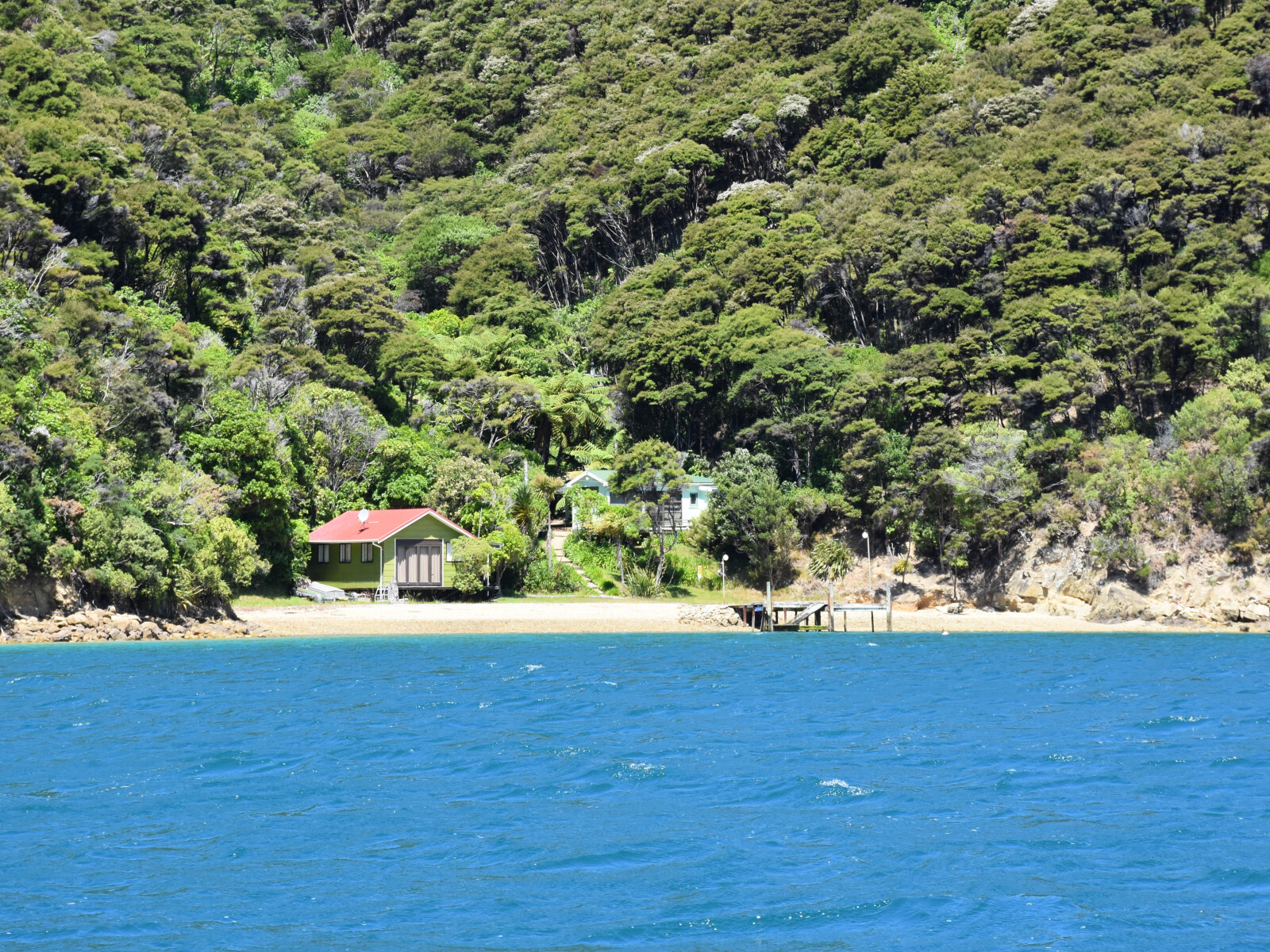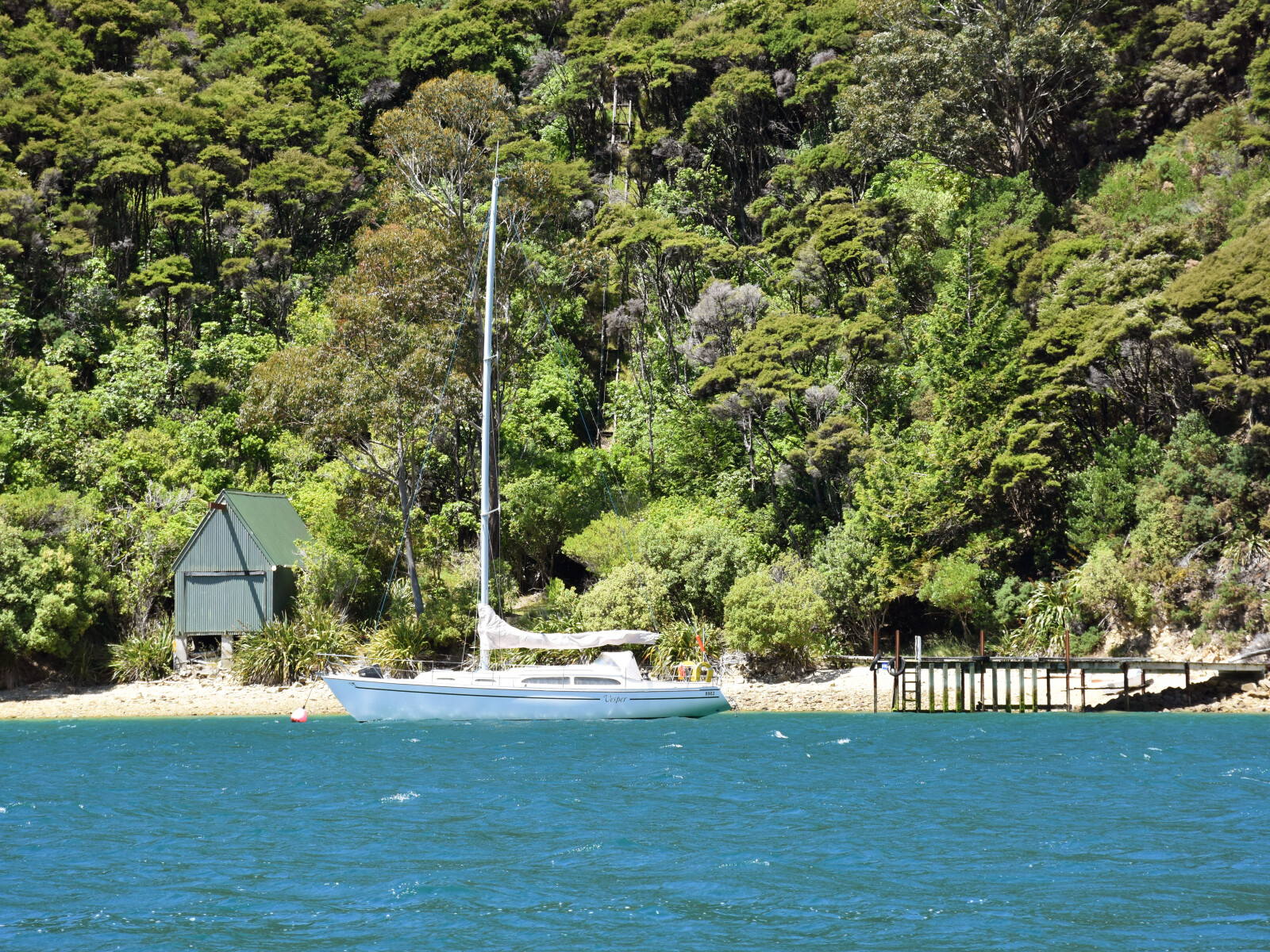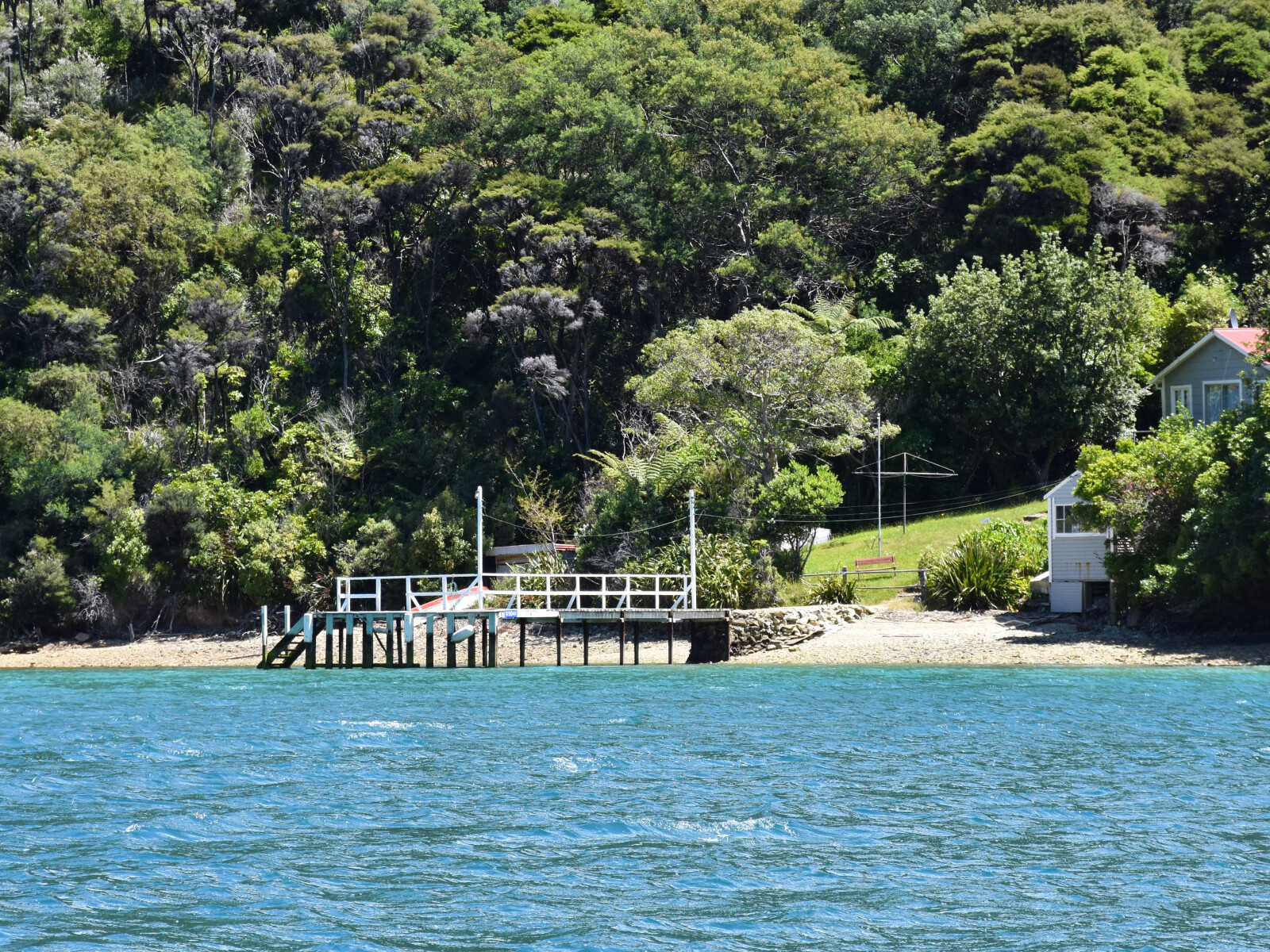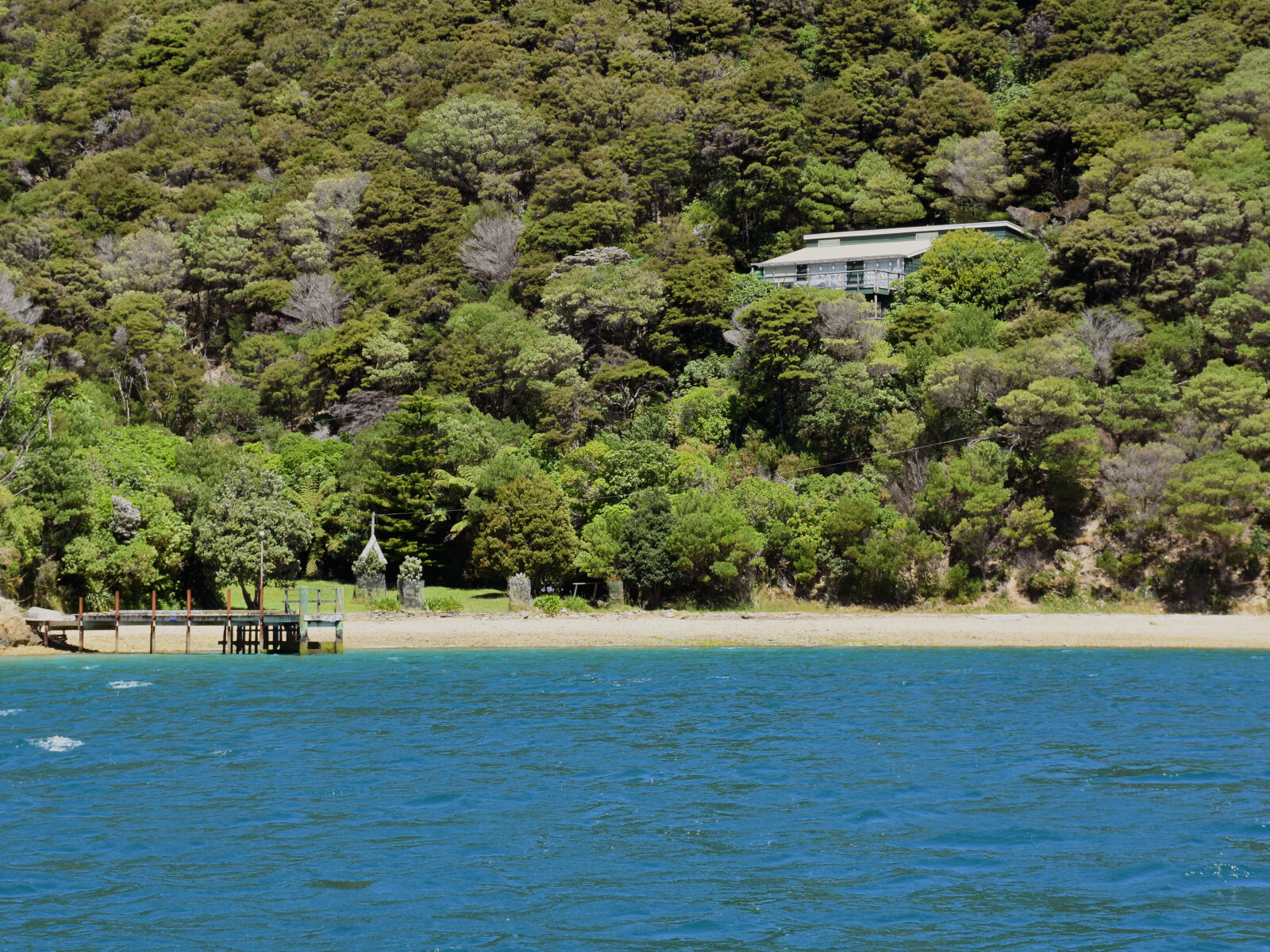This bay receives its name from the large kahikatea trees (prodocarpus decrydiodes) that once reached down to the shoreline. These large trees, sometimes referred to as white pine, can grow to 55 metres in height and live for over 500 years.1
The hill at the head of the bay is also called Kahikatea.2
The bay, as part of the wider Tōtaranui / Queen Charlotte Sound, likely has a long history of human use and occupation. Many iwi (Māori tribes) are associated with the area.3
The bay may have been used for food gathering and shelter. Māori used the wood of kahikatea for making weapons, bird spears, waka (canoes) and hair combs.4
Land in the bay was offered for sale in 1859, and was probably first bought by Donald McCormick an immigrant from Scotland. Gradually McCormick acquired all the land between Maraetai Bay and Karaka Point, including Kahikatea Bay.
The McCormick family built their homestead in Whatamango Bay and sold off most of the remaining blocks. They retained an acre of land at the head of Kahikatea Bay, in what was to become known as Curious Cove, and in the late 1950s built upon it a large holiday home.
During the Second World War, the flat land at the head of the bay was used by the military for seaplane training and briefly as a convalescence home. The Royal New Zealand Airforce took over the site as a holiday camp and it was later bought and run as a private enterprise.5
From the 1950s to 1970s, the camp was used by the National University Students' Association for the annual summer congress.
In the 2010s, the buildings and grounds were purchased for use as a Christian outdoor education centre, Kiwi Ranch, which currently offers family and youth vacations.6
1. “Dacrycarpus dacrydioides (Kahikatea)”, Taranaki Educational Resource, Research Analysis and Information Centre (Terrain), accessed November 19, 2019, http://www.terrain.net.nz/friends-of-te-henui-group/table-1/white-pine.html .
2. H. A. H. Insull, Marlborough Place Names, (Wellington: A. H. & A. W. Reed, 1952) 39.
3. Marlborough District Council, Nelson City Council and Tasman District Council, “Te Tau Ihu Statutory Acknowledgements 2014”, accessed April 2, 2019, http://www.nelson.govt.nz/assets/Environment/Downloads/TeTauIhu-StatutoryAcknowledgements.pdf .
4. “Kahikatea (Dacrycarpus dacrydioides)”, Tane’s Tree Trust: Native Tress for the Future, accessed November 19, 2019, https://www.tanestrees.org.nz/species-profiles/kahikatea/ .
5. Loreen Brehaut,”Curious Cove”, the Prow, accessed November 13, 2019, http://www.theprow.org.nz/places/curious-cove/#.Xcu-YVczbIU .
6. Malcolm McKinnon, “Marlborough places - Arapawa Island to Port Underwood”, Te Ara - the Encyclopedia of New Zealand, accessed November 11, 2019, http://www.TeAra.govt.nz/en/marlborough-places/page-5 .

